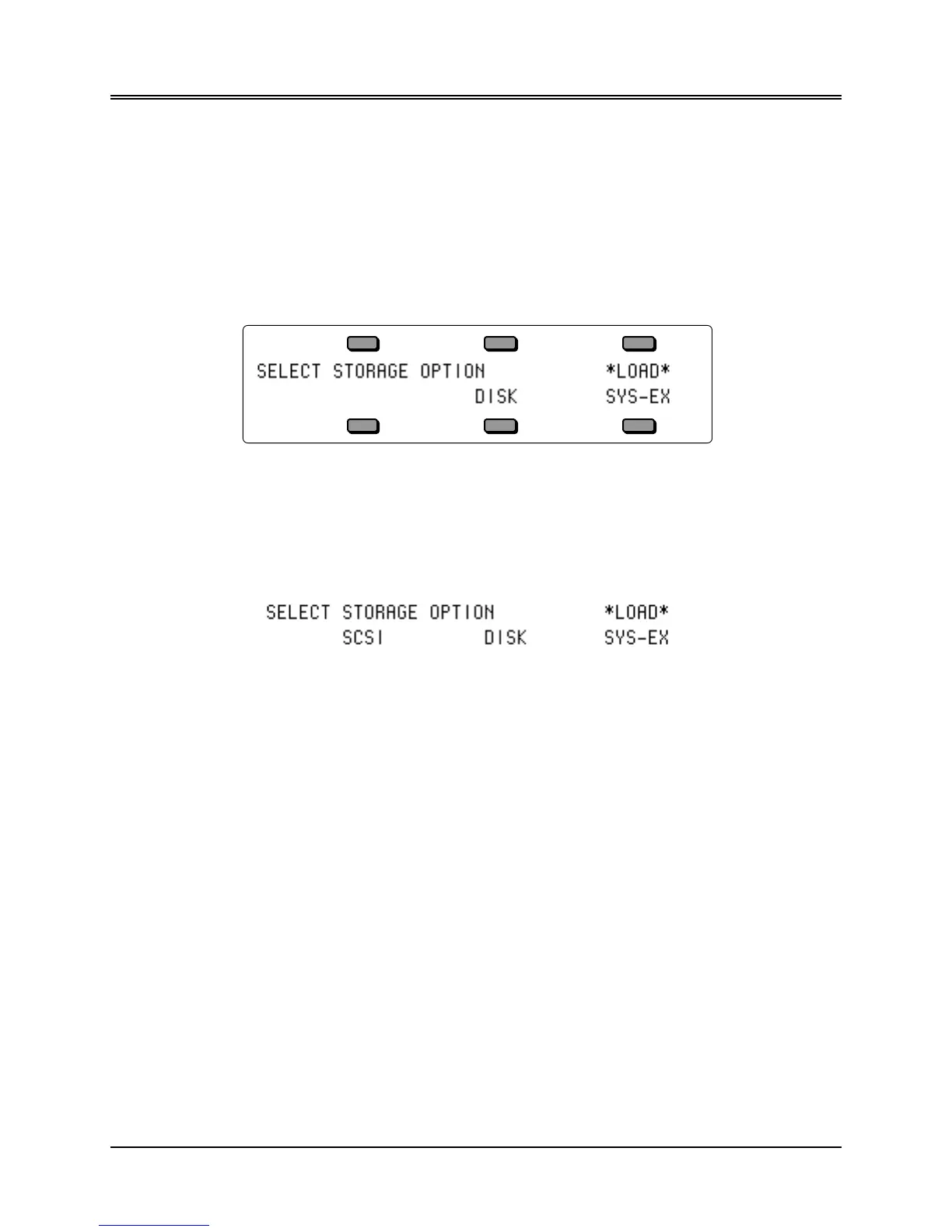Section 13 — Storage
1
The Storage page provides data storage functions that enable you to:
• save and load Program, Preset, Sequencer and System data to disk,
• save and load Sampled Sounds and their associated parameters, and
• transmit dumps containing Programs, Presets, and Sequencer data via MIDI system exclusive
messages.
The Storage page presents a series of menus containing command options which are selected by
using the soft buttons.
• Pressing Storage will always display the Storage page:
From the Storage page you can select which kind of data storage you want to use — Disk or MIDI
SYS-EX storage. A SCSI option is available for loading Sampled Sounds from EPS/EPS-16
PLUS/ASR-10 format SCSI Storage Devices when the optional SP-4 interface is installed. The
TS-10 SCSI port will only read from SCSI; it will not write to SCSI Storage Devices. When the SP-4
is installed, the STORAGE page will display a new active field (explained later), as below:
Pressing *LOAD* is the equivalent of pressing DISK followed by *LOAD* on the Disk page.
Pressing the Storage button twice in a row performs the same function. Since Disk storage is the
most convenient and commonly used form of storage, we’ll cover that first.
Disk Storage — Using the Disk Drive to Save and Load Data
The TS-10’s built-in disk drive is used to store all your program, preset and sequencer data, as
well as System Exclusive messages from other MIDI devices. The TS-10 uses a Quad-density disk
drive that can store 1600 Kilobytes of data on a Double-Sided High-Density (DSHD) 3.5” micro-
floppy disk and 800 Kilobytes of data on a Double-Sided Double-Density (DSDD) 3.5” micro-
floppy disk. The disks are enclosed in a protective plastic carrier with an automatic shutter to
protect the diskette from physical damage. It is important not to alter this carrier in any way.

